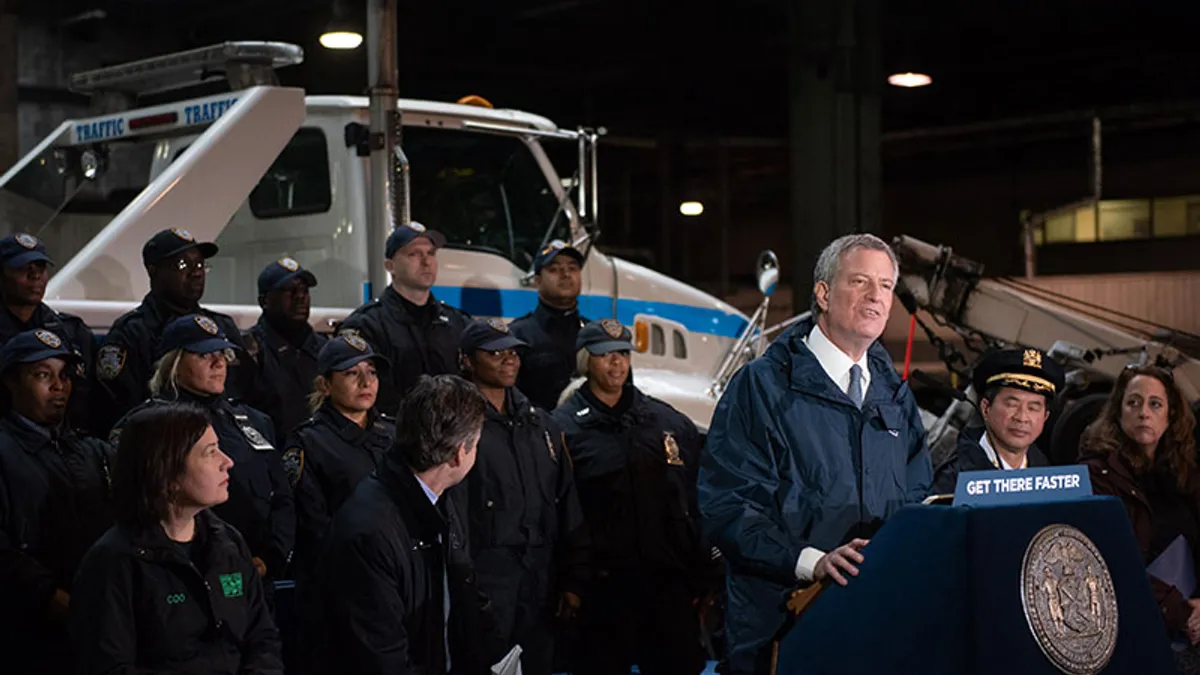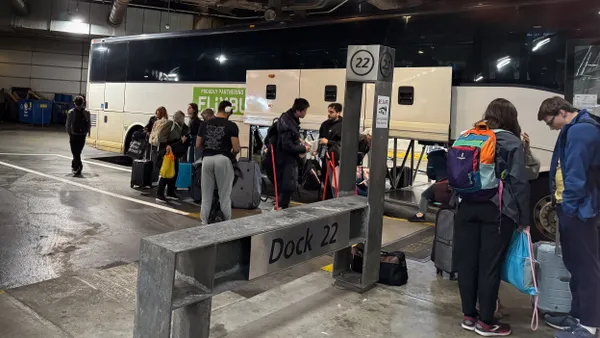Dive Brief:
- In a bid to increase bus speeds, New York Mayor Bill de Blasio announced the city will crack down on illegal parking in bus lanes. Seven new tow teams will operate across all five boroughs, and Bloomberg reports drivers could face up to $300 in tickets and fees for parking illegally.
- The average bus speed is just 7.4 miles per hour and less than 4 mph in busy areas, according to the city. The administration’s goal is to increase bus speeds by 25% by 2020.
- "It shouldn't be so hard to get around the greatest city in the world," said de Blasio in a statement. "Buses are a critical link in our public transportation system, but too often they are painfully slow. I hope all New Yorkers get the message that we have to keep bus lanes clear to get people moving and to work on time."
Dive Insight:
In his 2019 State of the City address, de Blasio emphasized transit improvements, including new ferries, a revamped congestion pricing proposal and a promise to "finally fix the subways," although the initiatives depend on state funding. And while the state-run Metropolitan Transit Authority controls the buses, de Blasio has said he wants to use the tools in his power to reverse a downward trend in ridership. According to MTA, an average of 1.9 million passengers rode buses on weekdays in 2017, down from 2.2 million just five years earlier.
Besides the parking crackdown, the city has also said it will explore adding new bus lanes, giving buses priority at certain intersections and redesigning some streets to accommodate buses in its bid to increase speeds and make them more appealing.
That’s on top of MTA’s previously-announced NYC Transit Bus Plan, which will redesign routes, open up all-door boarding, add electric and double-decker buses and improve customer service.
Clearing up bus lanes speaks to the larger challenge of curb management. As cities deal with more delivery options, passengers getting in and out of ride-hailing vehicles and the flurry of shared fleets such as Car2Go, curbs and parking areas are more crowded than ever, even in dedicated bike or bus lanes.
Cities have tried to create new policies that restrict curbside activities to designated zones or promote less intrusive delivery strategies including lockers or smaller vehicles (think: bikes or handcarts) for last mile deliveries. The increased ticketing and towing is a familiar strategy, but one that should work to clear up some space for buses.











